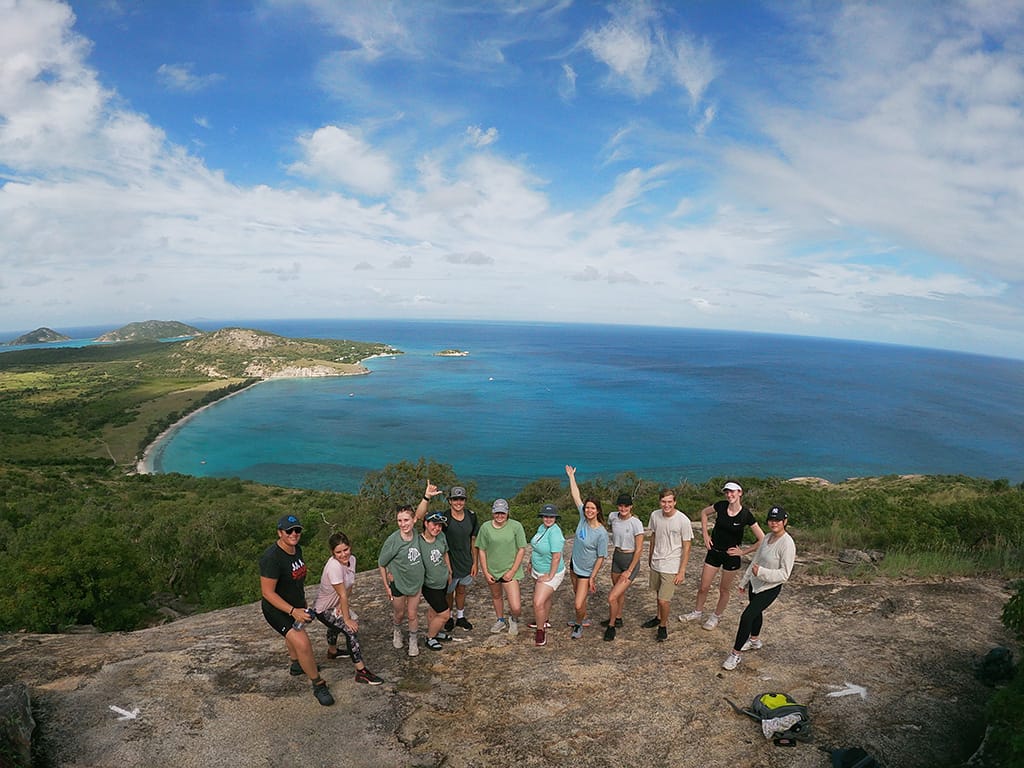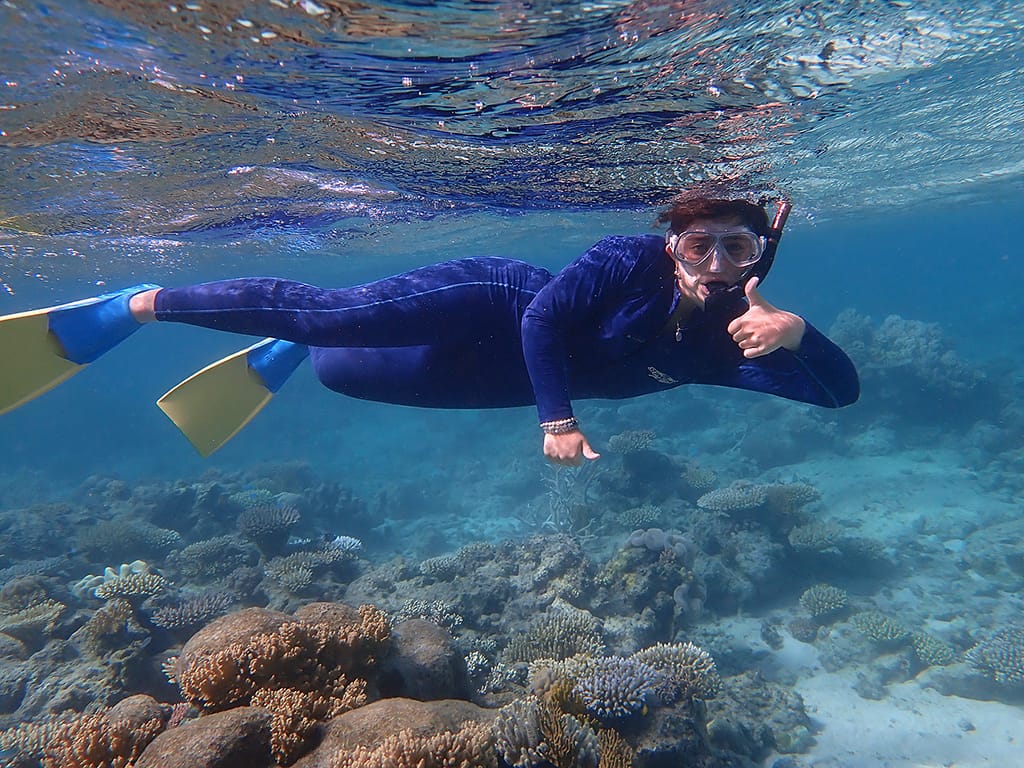Lizard Island coral reef study tour 2022
Discover the wonders of the Australian Museum’s Lizard Island Research Station on the Great Barrier Reef.
Time: 10.45 mins
Format: Video and Blog
After two years of postponements, 13 students and 2 teachers visited the Australian Museum’s Lizard Island Research Station for the inaugural Lizard Island Coral Reef Study Tour. Read about their wonderful experiences at the Station and on the Great Barrier Reef here.
The Lizard Island Coral Reef Study Tour (LICRST) was released to NSW Government schools in 2019 – but due the COVID-19 pandemic, the nine-night trip was rescheduled two years later than planned. To everyone’s delight, April 2022 finally brought the tour into reality. Students and teachers flew from Sydney airport and then boarded a light aircraft in Cairns to fly to Lizard Island – the plane was abuzz with excitement, as the LICRST group saw the beauty of the Great Barrier Reef from the air for the first time.
Greeted by Dr Anne Hoggett and Dr Lyle Vail, the Directors of Lizard Island Research Station – in addition to a friendly goanna – the first day ended with a sunset swim and BBQ on the beach. During the study tour, the students and teachers participated in an array of unique experiences found nowhere else in the world. Snorkelling at 15 different locations, such as Clam Gardens, Mermaid Cove and North Point, everyone was captivated by the beauty of the reef and by the extent of the coral recovery after the impact a Crown-of-Thorns Starfish outbreak, tropical cyclones and coral bleaching.

After each snorkelling experience, students and teachers engaged in an assortment of lectures from Dr Andy Lewis, Dr Cristiana Damiano, and from international researchers from the University of Hawaii and the University of Saint Andrews. Andy and Cristiana led engaging scientific seminars on topics such as identification of coral and fish species, reef fish reproduction, and the complex interactions between organisms on the reef. Cristiana also delivered specialty lectures on sharks and turtle species of the world, which the students loved. This meant with each snorkelling trip, students and teachers could put what they learnt into practice.
“During this tour, I have not only acquired a vast array of knowledge on coral reef ecosystems, but I can use and apply the content to all facets of my teaching. Additionally, I have further developed practical skills in the field and have already begun to implement these into my teaching programs. This experience has changed me as a teacher.” ~ Sam Philp (Teacher)

One of the biggest scientific tasks was to survey Watson’s Wall reef, which covered an area of 66 m by 400 m. Using transects, the group surveyed several variables like coral cover, fish abundance and rugosity (surface roughness) of the reef. This information was collated and analysed in the lab, to determine the characteristics of zonation within the reef. They concluded that the outer reef had the greatest rugosity, providing optimal conditions for coral growth and positively impacted the fish abundance. Students also learned how to draw scientific diagrams of specimens in-situ, and with the help of the amazing resources of the Lizard Island library, were able to identify fish and corals to genus and species level. These skills allowed the students to transform from tourists to avid scientists, observing interactions on the reef which usually go unnoticed. The group could now look at the reef ecosystem from a holistic perspective, recognising and identifying how different organisms utilise the reef.
“Coral reefs are much more complex than I had ever imagined. The evidence and the extent of damage to the reefs has awakened my awareness to the vulnerability of the marine environment. I have now realised that these environments have an incredible ability to recover, and I am intrigued about the recovery processes.” ~ Zoe
And finally, the LICRST group hiked to the highest point of Lizard Island, Cook’s Look, which was by far the best way to see the extent of the reef. Students could see the ribbon reefs in the distance which allowed them to gain a perspective for the sheer scale of the reef. We hope that this inaugural trip is just the start of many more to come, engaging and teaching aspiring scientists on the reef!
“This trip has been really uplifting and has provided me with a strong support group and endless inspiration. I really enjoyed falling in love with the ocean and marine biology. I’m so excited to continue in this area of research and further my studies at university, and maybe, hopefully, even come back to Lizard Island one day!” ~ Lea
We would like to acknowledge the traditional custodians of the Lizard Island Group. We pay respect to the Dingaal People and Ngurrumungu People for sharing Jiigurru with us for the duration of the LICRST. The LICRST would like thank the three generous donors who made the trip possible, the James N. Kirby Foundation, the Corella Fund and the Coles Danziger Foundation. The LICRST would also like to thank Dr Anne Hoggett, Dr. Andy Lewis and Dr. Cristiana Damiano. In particular, we would like to thank the Lizard Reef Research Foundation and the Australian Museum’s Lizard Island Research Station for their involvement and support to make this study tour a success. We would also like to thank Dr. Lyle Vail, Ruth Carr and Arthur Davie, who worked tirelessly behind the scenes to ensure the smooth running for the duration of the tour.
The trip was funded by three generous donors, the James N. Kirby Foundation, the Corella Fund and the Coles Danziger Foundation. In addition, each student contributed a small amount from funds raised from within their local communities.
Resetting the map will remove any badges and stars you have collected.
Are you sure you want to continue?
Are you sure you want to reset the map progress?
Cancel